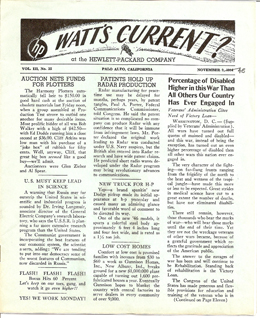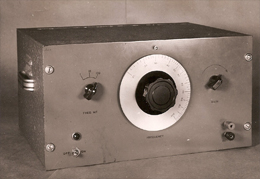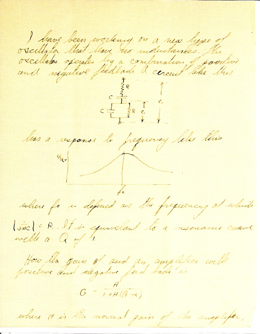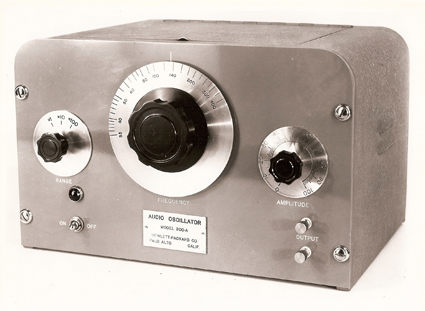“In the late 1930’s audio-frequency oscillators were expensive, complicated to use and had problems with instability and distortion. Bill Hewlett’s solution was to use a light bulb in a Wein-Bridge oscillator circuit to regulate the output of the circuit without causing distortion.”
The 200A Audio Oscillator was our company’s first test and measurement product. Developed during the 1930’s it was cornerstone of the “garage-based” Hewlett-Packard Company. After splitting off from HP in 1999 Agilent likewise traces it test and measurement roots back to this first instrument.
In the late 1930’s audio-frequency oscillators were expensive, complicated to use and had problems with instability and distortion. Bill Hewlett’s solution was to use a light bulb in a Wein-Bridge oscillator circuit to regulate the output of the circuit without causing distortion. The result of this design was the 200A, which was more accurate, smaller, easier to use and less expensive than those of their competitors.
The audio oscillator itself was an instrument for generating alternating currents within the audio spectrum. As an “audio” oscillator it was designed to produce audio frequencies (or normal sound waves) within its range. In the case of the 200A this was 35 to 35,000 cps [cycles per second].
In an article in the company newsletter, Watts Current, from November 1945 a few applications of the 200A were described. The most typical was to produce a steady signal to test radio loud-speakers and the audio amplifier section of radio receivers. Other applications mentioned was the instrument’s use for geological surveys done by the oil industry, to test the strength and speed of aircraft propellers, and in one case it was used to shake a concrete block to determine its strength and durability. Probably the best know application was actually for the model 200B and this was for its use on [the soundtrack] of the movie Fantasia.The 200 series audio oscillator was a remarkable instrument. Launching the company it was introduced in 1939 and continued to be manufactured until 1953 when it was discontinued in favor of the new model 200CD which replaced it. In this form the 200 series audio oscillator remained in the product until May of 1985 when the model number was finally retired.





